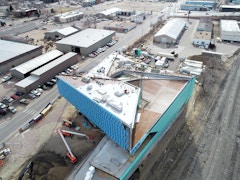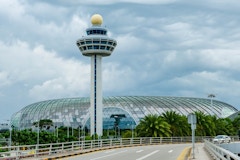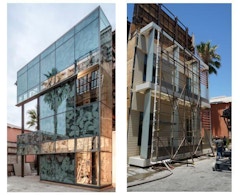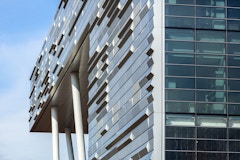Facade Design Beyond Buildings
At the core of facade design is the concept of interdisciplinarity, a bridge between concept and materialization apt to relay a built form
At the core of facade design is the concept of interdisciplinarity, a bridge between concept and materialization apt to relay a built form

Connections, those transitions between systems and materials, are critically important when the surfaces are curved or complex. Well-designed

Precision in digital workflow is necessary to deliver facade projects where there is a high design aesthetic or structural performance requirement.

Contemporary building practice represents a disconnect between traditional manufacturing techniques, that favor straight runs and orthogonal
The Utah State Capitol North Building, currently under construction, features 80,000 SF of classically designed cubic granite detailing, including

While additive manufacturing (AM) offers unprecedented freedom of design and a remarkable potential for material efficiency and lightweight

This paper outlines the successful implementation of digital workflows between the design team composed of Architect, Structural Engineer and Project

<p>Construction projects almost invariably encounter a critical stage at the moment of handover between the designing and the executing party. At…

<p>This paper will address the potential of ornamental architectural terracotta surfaces to mitigate the effects of climate fluctuations that will…

For over 60 years architects, engineers, and consultants have been specifying stainless steels for use in building skins and in some structural

Building envelopes are not only an immediately visible part of the building, they have also become a major factor both for cost and performance of

With an ever-growing interest in mid- and high-rise mass timber construction, this paper highlights the insights and lessons learned across global

Stainless steel has been successfully used in building envelopes since the completion of the Chrysler building in 1928. Today, it is used as both a

Developments in performative computational analysis, mass customization, and complex form manipulation revolutionized building envelope design

<p>Large format, steel-stud framed “megapanel” facades with rainscreen cladding create uniquely complicated requirements for digital documentation…

The Lucile Packard Children’s Hospital at Stanford University in Palo Alto, California features an extremely diverse set of facade systems within one

What does the fourth industrial revolution mean to the design and engineering of facades of the future? We are experiencing a global technological

In the vein of mass production, manufacturers leverage repeatable parts and modular construction in an effort to maximize quality control while

Highly transformable materials can be used as adaptive exterior shading systems by leveraging the relationship between external stimuli (heat) and